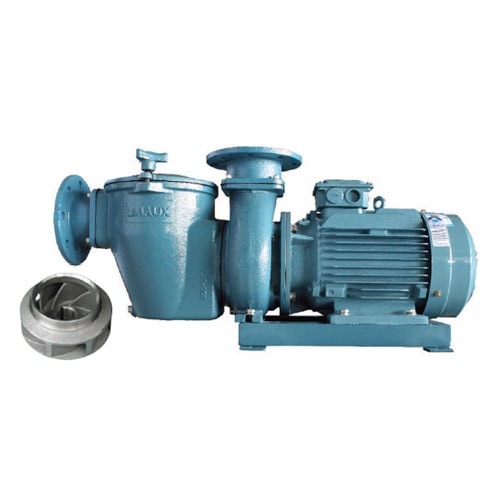Do you know what a jet pump for hot tubs is? We’ve all used a hot tub at least once and are familiar with it. A hot tub is a bathtub filled with warm water that has pumps with strong water pressure. These pumps are essential components of hot tubs, even more so than you might think. The presence of these pumps is crucial for an ideal hot tub experience. Most hot tubs have two separate pumps, and some may even have more. Now you might ask, what exactly is a jet pump and what function does it serve? Here, we’ll try to become more familiar with hot tub jet pumps.
The Role of Hot Tub Jet Pumps:
Essentially, hot tubs use high-speed jet pumps to send water into the tub at very high pressure. These pumps are responsible for spraying water into the tub through jets at high pressure. However, for normal water circulation, filtration, and heating, low-speed hot tub pumps are used.
Reasons for Using Jet Pumps:
For years, people have been using warm water as a primary soothing and therapeutic substance. Besides treating physical ailments, warm water also improves mental well-being. Hot tubs are not only made for therapeutic purposes but also for providing relaxation and comfort to swimmers in sports complexes and pools. The ideal water temperature in hot tubs ranges from 38 to 42 degrees Celsius, creating a comfortable environment. To ensure that warm water enters the tub with very high pressure, high-speed hot tub jet pumps are used.
Water Circulation System in Hot Tubs:
In hot tubs, the water circulation system is generally of two types. The first method of water circulation system is similar to the pool water system. In this case, the heating system is placed on the purification circuit. The second method of water circulation system in hot tubs is the jet pump system. In this system, massaging nozzles are used to provide the necessary water pressure in the hot tub. Typically, two to four nozzles are used per person.
Considerations When Choosing Jet Pumps:
Hot tubs are usually made with a depth of 120 to 130 centimeters. They also have benches for swimmers to rest. The distance from these benches to the bottom of the pool is about 60 centimeters. So, when choosing jet pumps, you must pay attention to the size and depth of the hot tub. The location where the nozzle is to be placed is also important. This position should be such that two nozzles are installed for each swimmer. One nozzle is installed at the bottom of the bench and behind the swimmers’ calves, while the other nozzle is installed at the top of the bench for massaging swimmers’ backs.
Important Points in Installing Hot Tub Jet Pumps:
Hot tub pumps, like other hot tub equipment, must be installed in their proper place to avoid any disruption to other equipment. When installing hot tub jet pumps, it is essential to ensure that the pumps are close to the pool basin and below the waterline.
In public pools, usually, a second or reserve pump is also installed. The reason for installing a second or reserve pump is that in case one of the pumps needs servicing or repair, the water circulation does not stop, and the water circulation process continues. Additionally, with two pumps, the drainage of hot tub water is done more quickly and efficiently. Jet pumps must be equipped with strainers or skimmers. A strainer or skimmer is a sieve-like basket used for cleaning. The sieve basket is installed in such a way that water passes through it. The reason for installing a strainer is to prevent fabric or hair from entangling around the pump impeller and causing damage.
Specifications of Hot Tub Pump Strainer:
The hot tub pump strainer must have the following specifications:
– Corrosion-resistant
– The diameter of the holes should be less than one-eighth of an inch.
– They choose this area to ensure that there is no drop in pressure, and the strainer’s operating life increases.
– If the pump is to be placed in a location where its noise is to be muffled or restricted, cover the foundation from end to end with industrial vibration isolators or cottonwood pads.

